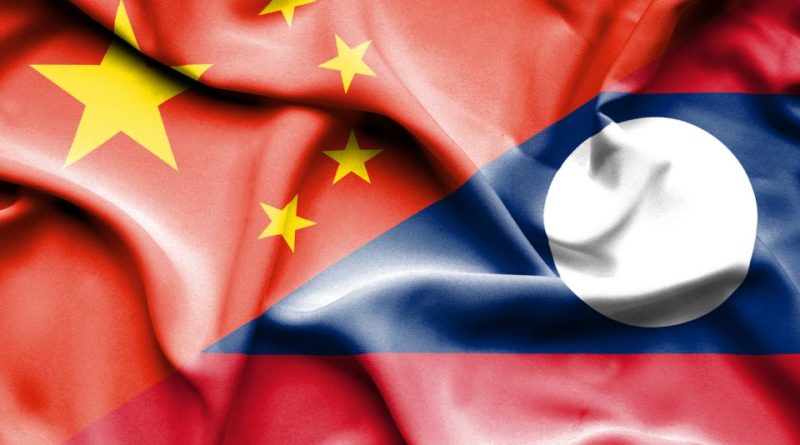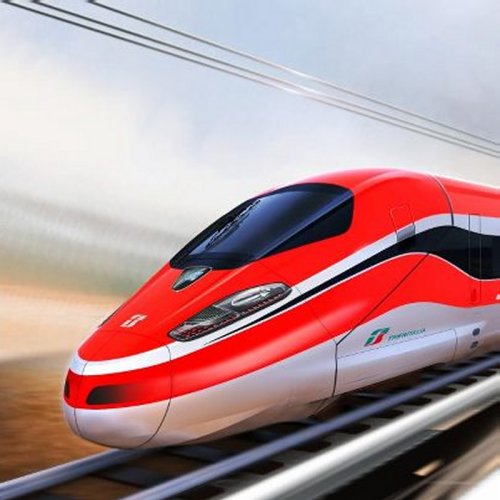Laos On A Fast Track To A China Debt Trap
Source: Atimes
Beijing-backed US$6.7 billion high-speed railway project threatens to bust the small nation’s already fragile finances
Laos is one of eight global countries considered of “particular concern” for a future debt crisis, according to a recent report by the Center for Global Development (CGD), a Washington-based economic think tank.
The main cause of concern is the small poor country’s big rich plans for a US$6.7 billion high-speed railway that China is promoting as part of its Belt and Road Initiative (BRI). The project’s cost represents a quarter of Laos’ current gross domestic product (GDP).
One-third of that sum will be covered by a China-Lao joint venture company, of which the Lao government will contribute roughly 30%, or around US$700 million. Around US$480 of that amount will come from an Export-Import Bank of China loan. The remaining US$220 million will be drawn from the state budget.
But, as the CGD report notes, “the financial terms for many elements of the project remain a secret.” The opaque terms on the remaining US$6 billion is raising concerns about the concessions China may be able to wrest in the case of default. The project is scheduled for completion in 2021.
Beijing has already notched various long-term land concessions for plantation agricultural and other commercial ventures that have facilitated fast migration of Chinese workers and entrepreneurs. The train, designed to connect China to Laos and then through Thailand to mainland Southeast Asia, will pave the way for even faster Chinese migration southward.
Laos’ population is estimated at 5.5 million, small for a nation geographically the size of France.

Laos’ state finances, meanwhile, look increasingly fragile. The government’s gross debt was an estimated at 67.8% as a percentage of GDP in 2016. The CGD report estimates that could rise to 70.3% by the end of this year.
Nearly 65% of Laos’ external debt is owed to bilateral creditors, namely China, according to an International Monetary Fund (IMF) report. Early last year, the IMF warned that Laos’ risk of “external debt distress” has risen from “moderate to high.”
It’s not only international agencies and Western think tanks concerned about Laos’ shaky debt profile. In 2014, the Export-Import Bank of China announced that it would curb its loans to Laos for most infrastructure projects, a sign of the state policy bank’s concern about Laos’ future ability to repay its debts.
J&C Services, an independent insurance specialist and a Top Gold agent of Toko Assurance in Laos, is offering customer-specific solutions to our clients, while providing at the same time the most competitive premiums.
Try us and be surprised how much we differ if compared to other providers !
www.jclao.com / info@jclao.com / 020 77 100 200
Exceptions were made for certain strategic economic sectors like mining and hydropower, for which Laos generally provides satisfactory guarantees on its loans. That same year saw the creation of the Laos-China Bank – a joint venture between Fudian Bank of China, and Banque Pour Le Commerce Exterieur Lao – with a remit to specialize in small and medium-sized enterprise (SMEs) financing.
Reports at the time suggested the joint venture was motivated by several Chinese firms, including some of the largest currently active in Laos, that were struggling to secure funding from China’s more prominent outward-oriented banks, including the Export-Import Bank of China.
The lack of funding forced some Chinese developers to postpone the planned construction of hydropower dams on tributaries of the Mekong River, according a 2016 report from the Stimson Center, another Washington-based think tank. Much of the electricity from those stalled projects was to be export to China.
That’s raising similar questions about the commercial viability and rationale for the high-speed train project, particularly as Thailand stalls construction of its part of the line initially designed to reach and connect at the Thai-Lao border.
Lao officials told a BRI conference in Bangkok last October that the train line was already more than 20% complete. The remaining 80% or so of the track will require extensive and challenging tunneling work to cut through Laos’ mountainous terrain.
Without the link to Thailand and wider Southeast Asia, the economic viability of a US$6.7 billion fast-speed train that connects only to China is in commercial doubt, according to financial analysts monitoring the project.

Loans from China are commonly guaranteed by future revenue from invested projects, meaning it might be decades until the Lao government actually collects any profits from the train line.
That comes amid rising concerns that the Lao economy may not grow as quickly as it has in the recent past. The IMF projects Laos’ average real GDP will grow 6.3% on average from now until 2036, considerably slower than the last decade’s average of 7.8%.
The Lao government reckons it can pay off its debts through future revenue, though it’s unclear in the country’s opaque system if those calculations are based on current or even faster future growth rates.
Vientiane must now be doubly concerned about what happens if its large megaprojects, especially in the hydropower sector, don’t generate expected future revenues.
Those concerns, too, are rising. Last month, the Electricity Generating Authority of Thailand (EGAT) said it is reconsidering whether to purchase electricity produced at the China-backed US$2.4 billion Pak Beng dam in Laos, which will be finished in either 2019 or 2020.
Laos had expected to sell almost 90% of the energy produced by the dam to Thailand, according to International Rivers, an environmental watchdog. Datang Overseas Investment, a Chinese company, controls an 81% stake in the venture, with the remaining stake held by the Lao government.
Given the official secrecy surrounding most of Laos’ mega-projects, it is unclear whether the Lao government has fronted 19% of the construction costs, which could be as much as US$500 million.

As China’s larger banks are only willing to finance big infrastructure schemes in Laos, mostly in hydropower and mining, Vientiane has had little choice but to continue with megaproject-led development to attract new funds. And because of its existing debts with China, Vientiane cannot easily change course against Beijing’s expectations.
Laos is known to guarantee debts with its natural resources, including state-owned land. When the government couldn’t pay back a US$80 million loan provided by China to build a stadium for the 2009 Southeast Asian Games, the government paid the contracted Chinese company with a 300-hectare land concession.
In late 2016, Prime Minister Thongloun Sisoulith said that he wants to end such land-for-repayment deals because they were affecting ordinary Laos, many of whom had been run off their technically state-owned land to make way for the concessions. It isn’t clear, though, if any legislation or other measures have been passed on the issue.
It is widely believed that the US$480 million loan from China’s Export-Import Bank for the Laos-China railway was guaranteed by the railway’s future income as well as two mining concessions.
This is another sensitive sector in Laos due to rising public concerns over environmental impacts. In response, Thongloun introduced a moratorium on new mining concessions in late 2016, though the measure hasn’t been strictly enforced.
If the high-speed train proves to be economically unviable, the Lao people will be left to foot the bill. That’s why some analysts feel Laos is a likely next victim of China’s “debt trap” diplomacy, a phenomena seen in other countries that have been forced to repay Chinese debts through sovereignty-eroding concessions.
Jean-Christophe Carret, the World Bank’s country manager for Laos, says that “fiscal consolidation” is necessary to improve Lao’s debt solvency. “Any potential implications of consolidation could be mitigated through adopting a gradual approach to consolidation, but more importantly through improved efficiency in spending.”
But with the China-backed high-speed train already on track, there’s likely no turning back for heavily indebted Laos.



